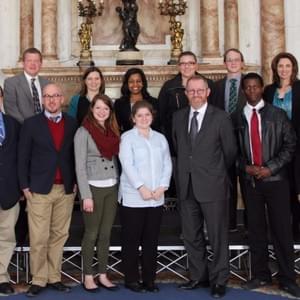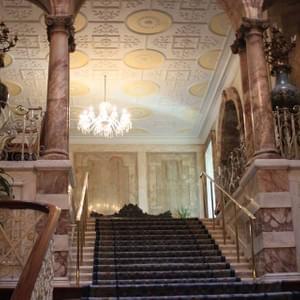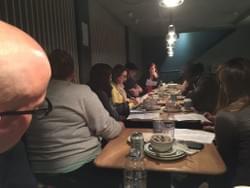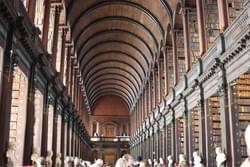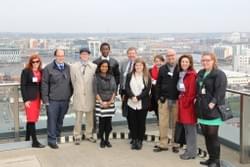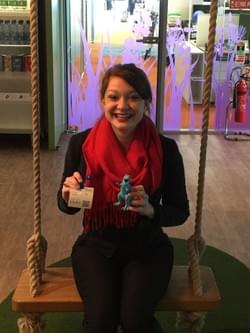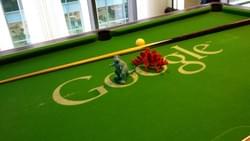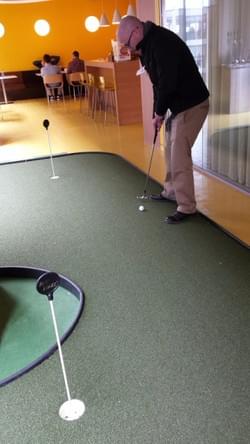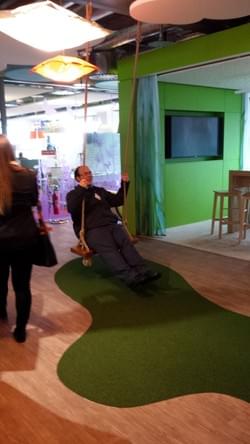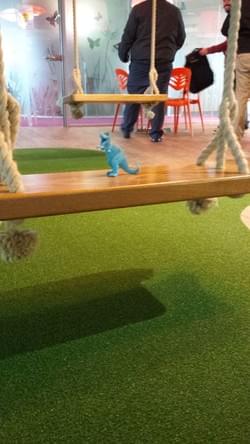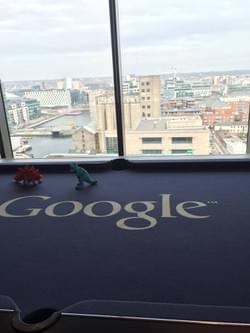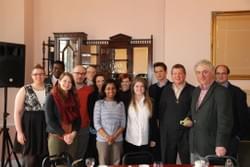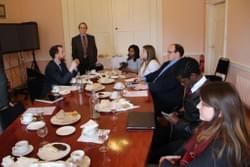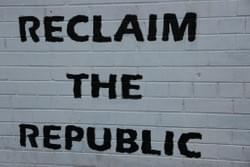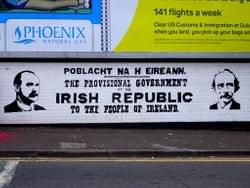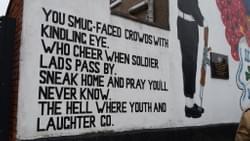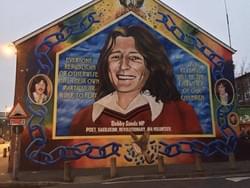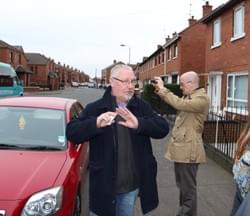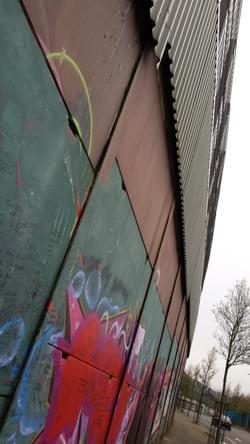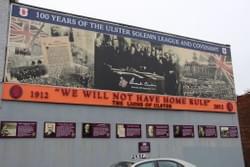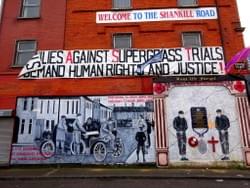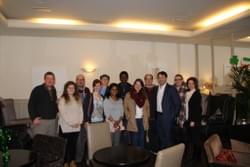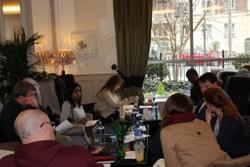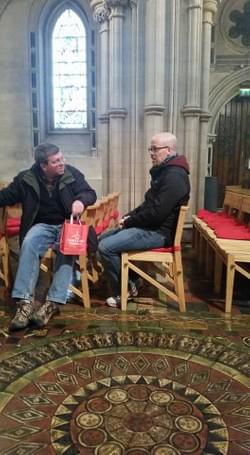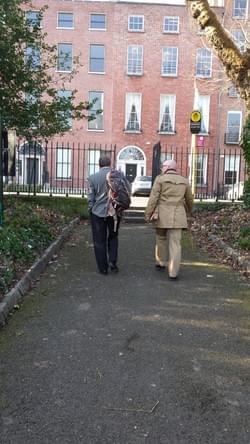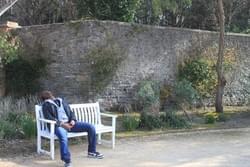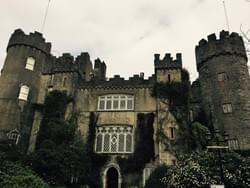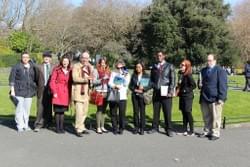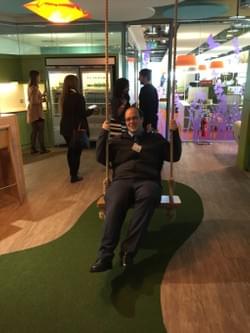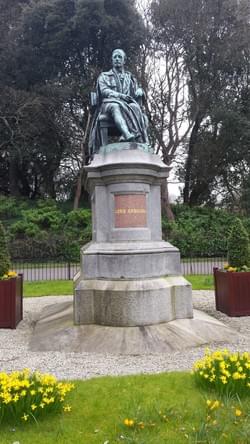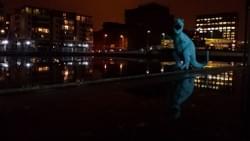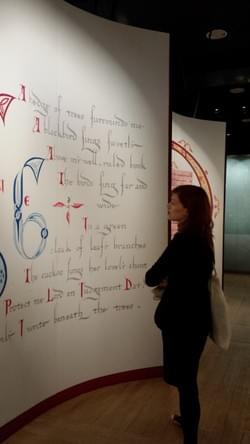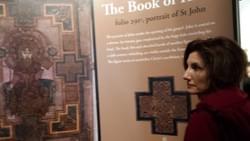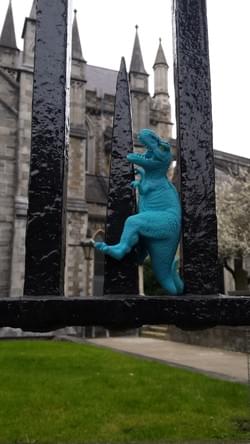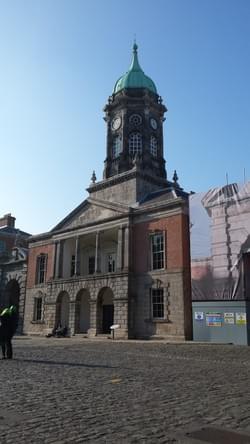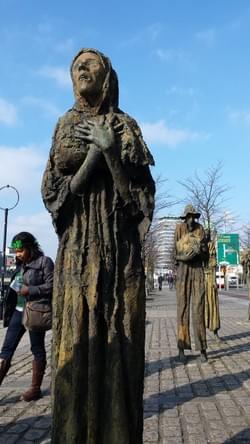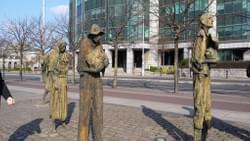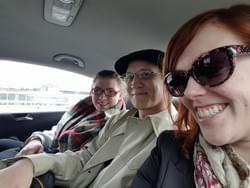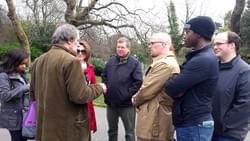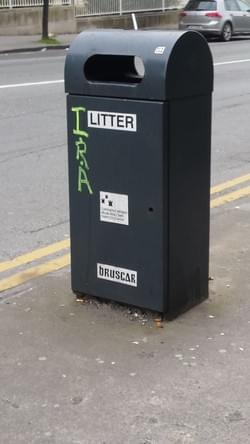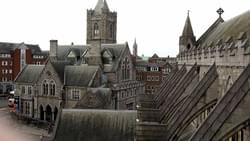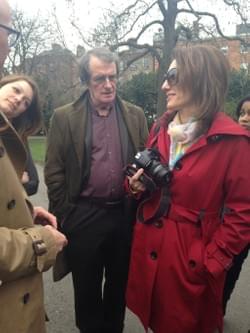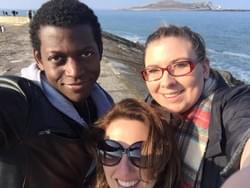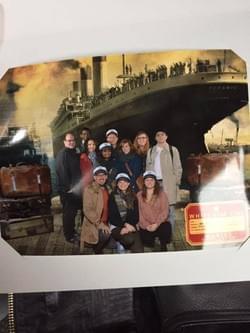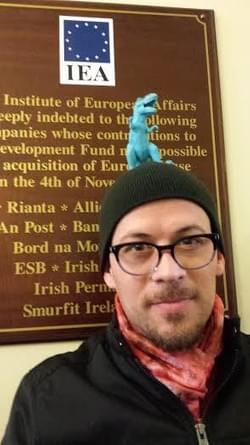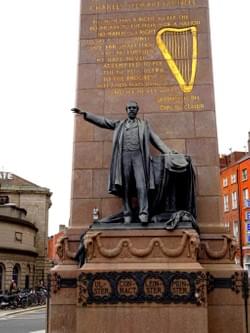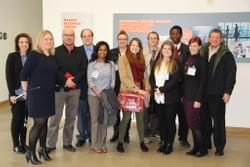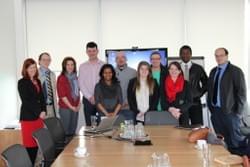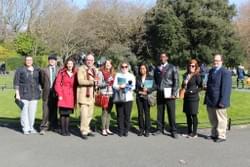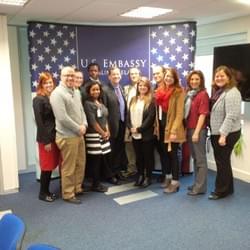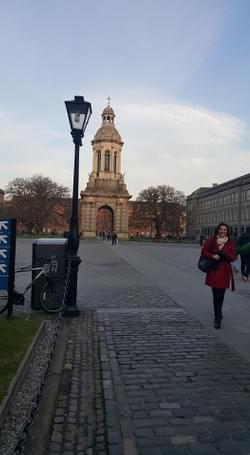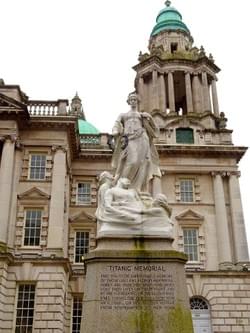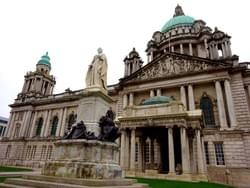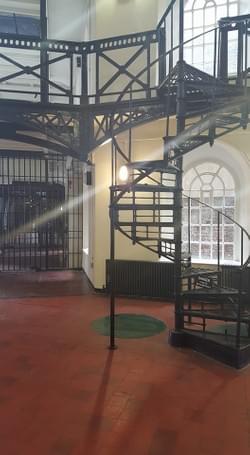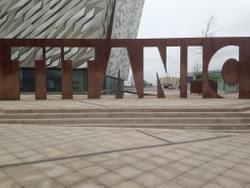
Georgia State University's 2016 Spring Break Course in Ireland
Boom, Bust and... Boom Again?
Department of Foreign Affairs and Trade
Rebekah Dowd
The Republic of Ireland offers a unique mix of social, political, and economic conditions that have shaped how the country functions today. During our study abroad trip in March, 2016, we were fortunate to experience a variety of meetings that explained the unique challenges post-modern Ireland has faced and overcome. One of my favorite visits was to the the Department of Foreign Affairs and Trade, where we met Ambassador Eamon McKee. Ambassador McKee explained how the Department has worked to safeguard Irish interests both at home and abroad in ways that will benefit citizens of Ireland regardless of where they live.
Though Ireland obtained independence from Britain in 1922, the Ireland of today is still shaped by three important factors from the past: the pub, the Catholic Church, and the farm. The farm drove their inwardly-focused economy until the 1950s and 60s. At that time, Irish policy-makers turned decidedly to an export-led economy and changed the laws to encourage foreign direct investment. The Catholic Church, once a strong influence on public and private life, has experienced recent scandals that led to a diminished role in society. Ireland has since made significant social progress in accepting previous outgroups, such as immigrants and members of the LGBT community, even passing a public referendum that voted to legalize gay marriage. The pub also remains an influential part of Irish culture. Ireland depends on leveraging this culture, be it exporting Guinness and Jameson’s or encouraging tourism by the huge Irish-diaspora community living in America.
Today’s Ireland is largely multi-cultural and European, a focus the government and various ministries have aggressively encouraged since they joined the EU in 1973. Their mission is to leverage Ireland’s strengths such as low corporate taxation, social inclusion, and EU integration for the betterment of Irish citizens wherever they live. As a result of their efforts, Ireland has become the European home for multiple high-tech American multinational companies, like Apple, Intel, Amazon, and Google (which we got to tour!). We were able to visit think tanks, government agencies, and several historical tourist attractions that kept reinforcing the message of the amazing recovery of Ireland over and over again. The potato famine of the 1840s, the independence struggle of the 1920s, nor the economic stagnation of the mid 20th century were able to stop the Irish spirit of determination to be free, independent, and successful. Adaptability is a quintessential Irish trait.
One final thing I’ve learned to appreciate about Ireland since my study abroad trip to the country: the wisdom and strength of the Irish people. On our last organized meeting day of the trip, we were privileged to meet two former prisoner-activists from the Troubles years in Northern Ireland from 1968 to 1998. One man fought on the unionist/British side, the other man was a former Irish Republican Army member. While we toured locations of bombings, jails that had held activists, and cemeteries where activists were laid to rest, both shared their personal stories of struggle. Despite their past political differences, each expressed a belief in the ability of the people of Ireland to put their cultural and political clashes behind them. This belief had prompted both of them to volunteer in organizations aiding in the long healing process. If you get the opportunity to study abroad in Ireland with Georgia State University, I encourage you to do so. It will change your perspective not only on Ireland and Europe, but also of yourself.
Trinity College Dublin
Alexandra Pauley
In March of 2016, I travelled to Dublin, Ireland, as part of a GSU study abroad course in international political economy. During the brief course that spanned the week-long trip in Ireland, I began to understand the reality of how macroeconomics works practically. Using Ireland as a case study gave focus to this understanding, and our meeting at Trinity College Dublin served as a jumping off point from which to explore macroeconomics in the real world.
In an hour-long lecture at the college, history professor Patrick Geoghegan described the historic narrative of Ireland – a cycle of rebellion and defeat until the early 1900s. After the Easter Rising of 1916 and subsequent civil war, changes began to come to the island. Britain relinquished power to the Irish parliament, eventually resulting in Home Rule for most of Ireland – with Northern Ireland remaining part of the United Kingdom. However, Ireland as a state seemed to break free of this cycle, creating a new narrative in the 20th century that spoke of peace and prosperity. With the fall of the housing market in 2007 to 2008, Dr. Geoghegan admitted the appearance of slipping back into the previous narrative of near success-turned-failure. However, he also noted that the 1990s through 2016 today still seem a great shift in this narrative. Not only is the narrative looking more positive economically, but it is also a narrative independent of foreign interference (considering the E.U. as invited influence).
Because this course concerned Ireland as the Celtic Tiger, and especially the fall of the Celtic Tiger, it was particularly interesting to learn what specific factors went into this fall. Dr. Geoghegan explained that the housing market crash was not necessarily unique to Ireland – or even the time period – but its ferocious impact was exceedingly difficult for the Irish. During the years of the Great Famine, caused by the potato blight that lasted from 1845 to 1852, the laws of the land were such that the majority of native Irish could not own land. They could not own land because they were Catholic, a perceived rebuke to the Anglican Church of England after Henry VIII broke from the Catholic Church in the 1530s. This meant that by and large Protestants held property titles while Catholics were tenant farmers. Thus, when the potato blight hit, Catholics were left with no food but also no means for livelihood. The island lost approximately two million people to death or emigration. Interestingly enough, there is no Irish term for emigration, so they called this “exile.” Fast forward 150 years to the 21st century, and the now-defunct laws that kept Catholics as second-class citizens have a lasting impact even today.
Dr. Geoghegan noted that as the Celtic Tiger grew, people were eager to buy homes. Where once Catholics were banned from this practice, the desire to own property lingered for many generations. When the economy began to boom, people started moving from the cities to buy houses in the suburbs and commuted to work. This meant that when the housing bubble burst, it affected a great number of Irish citizens. Without understanding the historical context, the housing bubble was just like those in the rest of the developed world – with little to explain why it hit Ireland so hard. The history of the laws, society, and culture gave context to the crash. It offered the detailed explanation that pure economic analysis could not.
Indeed, Dr. Geoghegan’s lecture during our time at Trinity College Dublin proved very helpful in understanding the growth and evolution of the Irish economy. His explanation of both historical context and the particulars of the housing bubble and crash of 2007 and 2008 were invaluable to the remainder of our meetings.
The Economic and Social Research Institute
Click to see Mr. Kieran McQuinn's presentation to the group!
The Economic and Social Research Institute
Deanna Snellings
With just a week to learn the historical and present trends in the Irish economy, we were able to walk away with several viewpoints that painted an image of a spiritual country still impacted by the Great Famine that is quickly becoming the gateway to Europe for multinational corporations.
Ambassador McKee, at the Department of Foreign Affairs and Trade, highlighted the idea that Ireland is more spiritual than materialistic and that there are essentially three pillars defining the Irish culture – the church, the pub, and the farm, though the dynamic has shifted throughout history. We also learned that the attitude toward to Famine still defines Irish culture and is seen differently by many Irish people who did not migrate than it is by those who migrated to other places, such as America, because of post-famine status.
Many people who have ancestry back to the Diaspora have been taught through generations of the struggled reality of Ireland, but diplomats and businesses are attempting to recolor that narrative to illustrate the booming business and thriving culture of Ireland today. Irish Pride has become a large marketing tactic as Ireland begins to brand itself as a data and technology capital for Europe and great environment for foreign direct investment.
As we toured Google, we noticed the amount of diversity and immigrants companies like that bring into the work force in Ireland. In later meetings, we discussed how much of a positive impact this has on Ireland’s economy as well as the ability to market Ireland to new businesses. The new sectors in Ireland, though marked by overwhelming benefits, have some consequences, most namely the skills misalignment in the domestic labor market. At the Economic and Social Research Institute, we were given numbers to the changing narrative we heard all week – proving a holistic perspective rather than just an anecdotal one.
Another widely discussed topic was the fear of Britain exiting the European Union, or Brexit. As Britain is Ireland’s top trading partner and migration between the close neighbors happens often, a Brexit creates concern for Irish governments and Irish businesses. We struggled to find any benefit that could come from a Brexit, but at the Institute for International and European Affairs, we talked about the possibilities that could come from Ireland being the only English speaking EU member. Overall, Brexit is regarding as a negative for all parties involved by the Irish government.
One of the most hands-on and eye-opening experiences we had was during our excursion to Belfast. While there, we were fortunate to tour the Peace Murals in both the Protestant and Catholic neighborhoods that highlight the way of life during The Troubles – a time of violent conflict between pro- and anti-British rule of Ireland. Although we spent the week hearing narratives of Ireland and seeing statistics to back it up, seeing history through the eyes of those who lived in and fought for it was priceless and indescribable.
The trip to Ireland would have been an incredible experience for a student in any discipline; however, as a student who is double majoring in international affairs and economics, I found it particularly enlightening. Visiting Ireland during Saint Patrick’s Day and at the anniversary of the Easter Rising (Ireland’s independence) provided a particularly unique experience for students. We were able to see the iron triangle of church, pub, and farm at work together while discussing the events that lead to the potentially new narrative that Ireland is writing for itself – a narrative of hope and growth.
Google
Samuel Miller
The strategic partnership between the Irish government and private industry, with multinational corporations in particular, has led to an almost unprecedented economic turnaround for Ireland since 1950. Once the poor-man of Europe, Ireland became the Eurozone’s fastest growing economy and began to rival traditional powers in standards of living, educational attainment, employment, and several other once seemingly-unattainable metrics. In short, Ireland went from a second tier economy to an important global economy by abandoning an import-substitution development strategy and implementing a more liberal policy of identifying and leveraging their comparative advantages in the global marketplace: a well-educated, English speaking workforce with access to the regional market of 500 million people.
Ireland has been resourceful in creating their own comparative advantages. The government recognized in the 1980’s that it could lower its corporate income tax rate to attract more foreign direct investment. They rolled the rates down from approximately 50% in the 1980’s, to the 40’s in the 90’s and by 2000 had in place their now (in)famous 12.5% corporate income tax for all companies. In addition, through open discussions with business leaders facilitated by Irish Consulates and other extensions of the national government, Ireland has learned that the primary (tax) attraction of Ireland isn’t that the rate is so low; but that it is stable and this stability helps create a more predictable business environment, which in turn creates more long-term investment. They’re niche needs to be high-tech investment, which is generally of foreign origin. Google: Dublin, located in the “Silicon Docks” region of Dublin was a perfect case study of Ireland’s development strategy. Ireland was able to lure Google into setting up their EU, Middle East, and Africa headquarters in Dublin. Dublin was able to provide an American multinational tech firm with access to the Eurozone market while being based in an English speaking country and providing a low, predictable, tax rates. Because of the free movement of citizens across borders within the EU, Google is able to attract the best talent from all over Europe to supplement the Irish workforce, one of the best-educated workforces in the EU. Google’s is only one of many such tech firms in Dublin, which now hosts Facebook, LinkedIn, and PayPal, among others.
What Ireland has accomplished is an interesting alternative to import substitution. Their growth could not be sustained by just developing infrastructure; consequently they began to focus on trade. Their import substitution experiment taught them that they weren’t big enough to be self-sustaining. Beyond just allowing or even encouraging trade as a mechanism for growth, the government of Ireland is actively marketing itself to the world resulting in great success. They have been able to attract 9 of the 10 largest software companies in the world in addition to having successfully lured 9 of the 10 largest pharmaceutical companies in the world. They have massive trade surpluses, and have the highest trade as a percentage of GDP in the Eurozone.
Ireland learned that they can’t win in the global marketplace with low-cost manufacturing. Ireland was able to leverage their comparative advantages into an industry specific cluster development strategy often seen in America. The key difference to note in the Irish example is that Ireland has not had as much success at generating native industry and therefore it follows that even their cluster development is really just a part of their FDI development strategy. Even so, this strategy has been successful and brought in huge amounts of economic activity into the country.
IDA Ireland
Click to see Ms. Bronwyn Gallagher's presentation to the group!
IDA Ireland
Gregory Joseph
I honestly didn’t know anything about Ireland going into this trip. All I knew about the country was that it was the origin of St. Patrick’s Day, leprechauns, and Guinness. During the pre-meetings before the actual trip, I was educated more on its economic history. After learning a little bit about the country before the trip, I knew that there was more to Ireland than I originally thought. When we arrived in Ireland and attended some of the meetings, I learned about Ireland’s drastic changes in its economic policy in the aftermath of its legendary Famine in 1845. I also learned about its constant cycle of economic success and failure through the years.
The meeting that I was assigned to research more thoroughly was for IDA Ireland. IDA Ireland’s main purpose is to attract Foreign Direct Investment to Ireland, so it was crucial to the growth of the Irish economy from the close-minded island to the blooming technology hub it’s known for today. When Ireland moved from its isolationist mindset to one of openness and trade, it was thanks to IDA Ireland that Ireland received the amount of FDI from Multinational Corporations like Google and Dell. In each of the economic booms that Ireland has experienced, FDI is recorded to make up a significant portion of the GDP in the country. If the Britain does leave the European Union, IDA would be responsible for attracting new MNCs that needed a way to enter into Europe to Ireland given that it would be the only native English speaking country. I also learned that IDA is also responsible for promoting factors like its low tax rate, high education quality, and highly productive workers, much to the dismay of other countries in the world. A large sum of the thanks should be placed on IDA for Ireland’s current economic prosperity.
Another interesting thing that I noticed during the trip was the amount of Americans that lived in Ireland. There was an extremely large population in Dublin that were United States native, which was refreshing because throughout the whole trip, I never felt far from home. While Ireland does indeed has its own culture, Dublin felt more like an American city than if we went to a city like Paris. On the subject of culture, part of the Irish culture is teaching the population Ireland’s native language of Gaelic. I thought that it was weird that a country would actively teach its population a language that is only applicable in that state. It would be infinitely more valuable to teach the population a more universally used language like French that would be useful when traveling all around the countries in the European Union and throughout the world. Out of all of the countries I have visited, Ireland’s vigilance to keep the Gaelic language in circulation instead of completely dying out like some languages shows how much the Irish value their ancient culture and are willing to go to great lengths to protect it, even if at times it may seem impractical.
All in all, the trip was very enlightening about Ireland’s history, economic policy, and social issues that made the country stand out from its initial obscurity in my mind. The whole experience piqued my interest about other countries that I may just conventionally write off as being “boring” to explore. Who knows what interesting stories that some of these other countries have in their history that shaped their economic and social policies today?
US Embassy
US Embassy
Christy Tarallo
Throughout our trip to Ireland several underlying themes seemed appear in every meeting. Some of these themes were expected, some were not. As American students of political science, economics, and finance, we arrived with certain underlying biases simply because we were students of an American university and taught from the American perspective. That being said, throughout our meetings we sometimes veered towards Irish-American relations, oftentimes wondering to what effect a certain economic policy change, such as the end of the Double Irish, which allowed multinational corporations to lower their tax liability, has on America and our relations to Ireland.
The theme I felt geared the entire course was the turn from an isolated economy in the 1940s to a global economy. In that turn captained by TK Whitaker, relations opened with the rest of the world and with America. Ireland gained a new form of soft power by use of exports such as whiskey and beer and gained attraction in America for their beverage exports. Economically, with the new found openness, Ireland was able to join institutions such as the EU, and in doing so, gained a strong foothold in global politics.
Irish-American relations have been and remain strong for many reasons: America has an extremely large population of Irish-Americans, Irish trade plays an important role in American economics, and diplomatically President Bill Clinton played a strong international role in facilitating the end of “The Troubles” of Northern Ireland. On a corporate level, major American companies have relocated to Ireland in order to lower their corporate tax penalties.
As Ireland becomes more and more powerful, America’s role in Ireland has dwindled while relations still remain strong. America has no need to intervene in the way it has in the past or the way it does with other countries. The US Embassy in Dublin plays a rather minor role compared to other large Embassies. Its capacity lies mostly in event coordination, economic and cultural awareness, and aiding local Irish organizations in events or hosting art shows and talent showcases. Most recently, the US Embassy hosted a talent showcase for the youth of Dublin to show off and raise awareness of Irish cultural impacts on art and performance. The Foreign Service officers of the Dublin Embassy also outlined the importance of their roles in American congressional circles, telling us that it has been their job to educate elected leaders in economic relations of the region and state.
Enterprise Ireland
Click to see Ms. Alexa Toomey's presentation to the group!
Enterprise Ireland
Tyler Hoblen
The trip to Ireland for the “Ireland: Boom Bust and…Boom again?” program was very informative and helped to experience another culture while also learning about the Irish economy and its history. Each meeting had its own main points that were covered, but the main narrative throughout was consistent with every place we went. All of the meetings covered the famine and how it changed Ireland as a whole, as well as how that cycle tends to repeat itself. Another big thing that most of the meetings covered was the corporate tax rate and the ending of the “double Irish.” Most Irish companies and ambassadors agreed that the tax rate was one reason that they were seeing many companies move to Ireland, but the main reason was the great workforce combined with the fact that they were one of the only English speaking countries in the EU.
We met with Alexa Toomey at Enterprise Ireland, which was the meeting that I took the lead on, to discuss the role that they have played in the boom bust and boom again in the Irish economy. I learned a lot about how Enterprise Ireland focused on economic strategy and action plans for jobs. We also covered their main focus, which is helping to find and fund startups. They offer a wide variety of help for companies small to large, to somebody with an idea that wants to make it a reality. They have funding for smaller companies and they also have technology centers that they fund along with IDA Ireland. Companies can meet with researchers at the institutes and be assisted with bettering their product. There is also a great deal of reliance on the agricultural sector in Ireland, even though their tech and medtech sector are the fastest growing.
The visit to Enterprise Ireland hit all of the key takeaways from our trip. Alexa discussed the famine as well as the cycles that have historically dominated Ireland. She also went into quite a bit of detail about how the corporate tax rate, while a factor, was in no way the only reason for companies moving to Ireland. They are coming because of the skilled workforce that is ready to be employed as well as Ireland being one of the only English speaking countries in the EU. It is a good strategic position to be able to reach the rest of the European market. We also covered that the new boom is due to an export-led economy using the agricultural sector as a back bone, as well as the growing enterprise market in Ireland. The Brexit is particularly interesting to me because of what it might mean for the financial capitals. If England were to decide to leave, we would see a shift of many financial companies from London to Ireland and the implications that may follow are interesting.
Overall, I think this was a fantastic trip. Not only was I able to learn about Ireland’s economy and political structure, but I took away a lot about its culture as well. The experience was amazing, meeting new people and learning so much. The team we had all worked well together and that made the experience that much better. I am grateful that I was able to go on this trip and I would recommend anybody who is able to take advantage of trips like this while you still have the chance.
The Institute of International and European Affairs
Stephanie Allred
My experience in Ireland gave me immense knowledge of economic policy I had not known prior to my visit and I also took away a great sense of the importance of Irish history in modern times. My favorite aspect of the trip came from the culmination of events that transpired and that is my personal inspiration to travel back to the island nation. I believe the most influential cause of this inspiration was our think tank experience. We visiting two of them, The Economic and Social Research Institute (ESRI) and The Institute of International and European Affairs (IIEA). In those meetings, we were able to discuss policies undertaken to lead Ireland to economic prosperity and decline. I am of course referring to the Celtic Tiger era and the subsequent recession in 2009. Here I will explain exactly what about those meetings inspired, and continues to do so, to travel abroad once more to Ireland.
I will begin by explaining why our meeting at ESRI was so important to me. As an economics major with a passion for studying the Great Recession in the US, my hope for this entire trip was to understand the different economic policies implemented throughout modern Irish history and compared them to policies in the United States. Kieren McQuinn, the person we met with, compiled an enormous PowerPoint presentation with graph after graph to illustrate to us what the Irish economy looked like, and why, during the Celtic Tiger era. The difference between Ireland and the US that I took away from that meeting was that the origins and the creation of the housing bubble as well as the federal government’s response to the bursting of it. In the United States, the housing bubble was created by risky lending or subprime loans and more than enough morally hazardous activity from banks and insurance companies. In Ireland, the housing bubble was created from a booming construction sector fueled by foreign direct investment (FDI). The difference in government reaction is also significant. In the US, there were several types of responses but the main one being the Wall Street bailout of AIG, the insurer of almost all risky mortgages-back securities. In Ireland, the government swallowed all of the private banking debt stemming from tons of mortgages with large price tags. Although the economic graphs and other indicators look similar between the two countries, the differences are more important to me. The way in which Ireland handled the crash of the Celtic Tiger, to me, seems to have a more equitable ideology behind it whereas I have always viewed the US recession as a result of crooked bankers, insurers, and investors. My inspiration here is that I would want to go back to Ireland and understand their recession in more detail, being able to research with a think tank like this to understand how to avoid this type of recession again, and to fulfill my academic career with some sort of research project comparing the two countries during this time.
IIEA was another inspirational meeting for me in that we had the chance to understand, in more detail, Ireland’s economy in relation to the European Union as well as its role within in. This, oh so thankfully enough, was the meeting that I was in charge of. We met with Brendan Kennan, a former financial journalist, who gave us a brief history of European integration. I have always been interested in the EU and the idea of a “United States of Europe,” especially in terms of economic integration. He also discussed Ireland’s recession and describes it as “very vanilla”- a term which I will probably never forget. Our discussion followed a similar pattern of the one at ESRI but the key topic covered at the IIEA, for me, was Brexit. The reason I enjoyed listening to the insights about a Brexit is because it highlights economic relations between England and several other countries, namely Ireland. The reason I enjoyed this meeting so much was because it encouraged me to want to study more and more about European relations and to think about the current UK in terms of a potential Brexit. Also regarding the EU, I would like to delve into more detail about the PIIGS (Portugal, Ireland, Italy, Greece, and Spain) to determine effective economic recovery strategies in Europe.
All in all, my visiting of think tanks in Ireland has rerouted my academic and career aspirations. My Irish experience has given me some guidance as far as research potential for a graduate thesis and I’ve even reached out to certain administrative resources about an Ireland Fulbright. I will always be thankful for this experience and I cannot wait to travel back!
Belfast, Northern Ireland
Michael Shea
James Joyce observed that, “history is a nightmare from which I am trying to awake.” Ireland is a country striving to break the seemingly inescapable cycle of suffering and conflict that began with the first English conquests in the late 12th Century under King Henry II. Standing in Christ Church Cathedral next to the tomb of Richard de Clare, Strongbow, I am reminded poignantly that the beginnings of British Empire were to be found there. Seven centuries of conflict, subjugation, starvation, and emigration could not break the Irish spirit. And while it would have been imaginable for Ireland to remain a poor backwater on the fringes of Europe mired in failed utopian-leftist experimentation and the politics of semi-isolation with a rich cultural heritage and a great deal of unfulfilled potential – a greener, colder Greece, perhaps – Ireland has instead chosen to embrace the cosmopolitan, open, industrious, and energetic politics of the global age.
This new Irish cosmopolitanism is apparent in the fact that Ireland is the first and, for now only, country to affirm by popular vote the right of same-sex couples to marry, and over the strong and sometimes histrionic objections of Church hierarchy. This marked perhaps the clearest indication yet that the influence on Irish society of the Irish Iron Triangle of Church, farm, and pub had truly begun to wane. In fact, while meetings with officials with the Department of Foreign Affairs and ESRI confirmed that the Irish tend to vote center-right on the European scale of politics (probably far-left for Americans), the vote in favor of same-sex marriage in Ireland is something the Irish are quite proud of.
This new Irish cosmopolitanism is apparent in the fact that Ireland, while maintaining a dedication to the liberal ideals of the state’s role in ensuring the enjoyment and exercise of the economic and social rights currently and regrettably denied in the United States, Ireland has also embraced global trade, immigration of labor and the role of FDI in their national economy in a way that would have abhorrent to Éamon de Valera. Like the Cubans I met last year at the University of Havana, the Irish I spoke to and attended lectures and seminars from at Trinity College, Enterprise Ireland and IIEA all spoke of the need to honor the struggles and ideals of Ireland’s past – particularly a commitment to the economic and social justice for which so many Irish fought, suffered, and died as revolutionaries under British occupation or as peacekeepers in Palestine, Lebanon, East Timor or Syria – while coming to terms with the realities of the Internet Age. A trip to Google’s headquarters on Dublin’s Silicon Docks and an awareness that Ireland’s per capita GDP is currently higher than Germany’s while maintaining a better GINI Index score than the United States should easily confirm this observation.
But the willingness to embrace a new, modern, prosperous, and peaceful path is perhaps nowhere more apparent than in the Shankill and Falls Road neighborhoods of Belfast, where once bloody warriors who reluctantly took up arms in a struggle for survival – the Protestants for their right to live as British persons and the Catholics for their liberation of British imperialism – can today tour the streets of their city and point out at once the bloodiest and most personal moments of the Troubles while being dedicated to living in peace with their former adversaries. If Ireland is to leave behind, for now, the boom and bust tempestuousness that is the dark side of capitalism and shed the legacy of the Celtic Tiger, it will be because Ireland has awoken from its history.
Paul Gleeson
Angela Harris
The story of Ireland and its Economic and Political status became clear during my visit. I toured the Department of Foreign Affairs and Trade, Trinity College Dublin, Economic and Social Research Institute (ESRI), Google, IDA Ireland, The U.S. Embassy, Enterprise Ireland, Institute of Ireland Foreign Affairs (IIEA), the peace walls in Belfast, and Paul Gleeson the Former Consul General of Ireland in Atlanta. When considering the international political economy and its drawing upon the politics, economics, sociology, history and cultural studies of a nation, to analyze it, our meetings in Ireland were beyond informative. Each meeting brought me into contact with many of the players responsible for expanding Ireland’s place within the global economy. These entities represent both the public and private sector. It shows how indispensable a country’s government is in fostering a climate for businesses to function and thrive. This is true when dealing with a countries internal, political and economic structure. What this trip to Ireland illustrates is how impossible it would be to do business without strong diplomatic ties with the United States. For instance, strong diplomatic ties with the United States has allowed Ireland to garner significant direct investment from American companies. Ireland’s relationship with the United States is important to them. It is always humbling to see how we as citizens of the United States fit into the global community. U.S citizens often develop a tendency to have a myopic view of the world. Going to Belfast and learning how the Irish fought and died for independence helps to better understand how the American struggle for independence fits into the western mosaic. The treatment of women and the struggle for sexual equality is also not unique to America. An example of this would be a bill passed in the 2012 Assembly of Ireland mandating that 30% of party candidates in the next general election be women. The truth is we are more alike than we are different. And as the trend toward globalization increases, our world gets smaller and smaller.
My visit with Paul Gleeson was especially enlightening. He spoke of how the bursting of the mortgage bubble in Ireland coincided with the mortgage crisis in the United States. The meeting with the Consul General kind of synthesized the goal of the trip. Since it is by the efficient working of all these entities that allows the Consulate to offer a coherent picture for those interested in doing business with and travelling to Ireland. The lesson in Ireland’s economy was theoretically a lesson in U.S. history as well. Ireland citizens were encouraged to buy property as a form of investing. The Irish banks were also caught up in the market where greater financial integration, which was stimulated in part by the birth of the Euro, enabled them to turn to more and shorter term borrowing from abroad. Both countries are working toward strategies to prevent a repeat of the economic boom and bust cycle.



